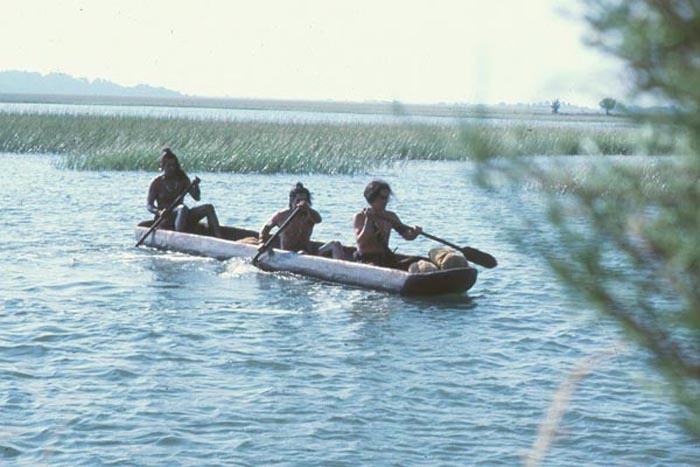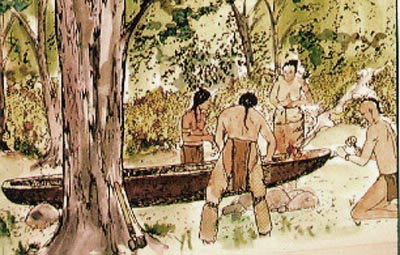Native Americans
For thousands of years before the arrival of the Europeans, the river attracted indigenous peoples who came to hunt and fish in the area. The name of the river– Hackensack– comes from the Lenape word Ackingsah- sack, meaning flat confluence of streams The town of Secaucus gets its name from a derivation of the Algonquian words for “black” (seke or sukit) and “snake” (achgook)– or “place of snakes.”
The Meadowlands were once part of Lenapehoking, the traditional Lenape Indian territory. For Lenape people, the Meadowlands provided seasonal sustenance. Though archeologists have not uncovered specific evidence of early Lenape use along the Hackensack River, evidence from other sites in the Mid-Atlantic region suggests that from about 6000 BCE to 1000 BCE, the Lenape followed a coastally-oriented subsistence strategy with seasonally rotating settlements.
As a stopover point for migratory birds on the Atlantic Flyway, the estuary around the river would have, at the very least, drawn seasonal hunters. Collection of the estuary’s fish and shellfish likely started around 1000 BCE and intensified during the first century of the Common Era. At the time of European contact in the early seventeenth century, Lenape people lived in small bands in communal territories and continued to orient their subsistence toward the water.


